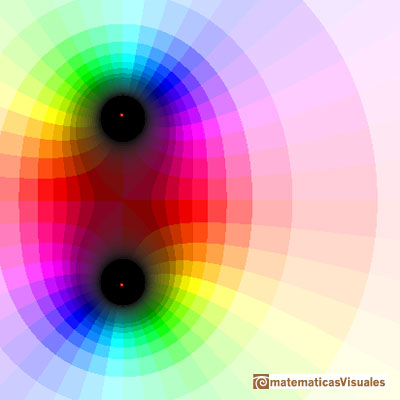
After studying Linear Rational Functions we are going to consider rational functions that have a denominator that is a degree 2 polynomial (a parabola).
The simplest case happens when the numerator is a constant and the denominator is a degree 2 polynomial.

This kind of rational functions may have two vertical asymptotes:
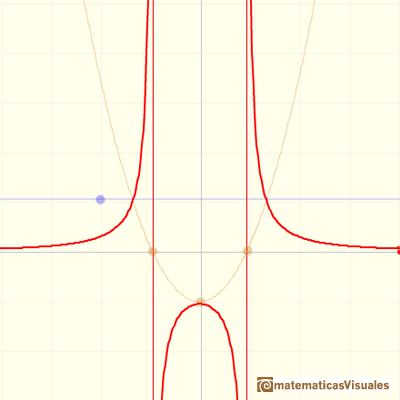
Only one vertical asymptote:
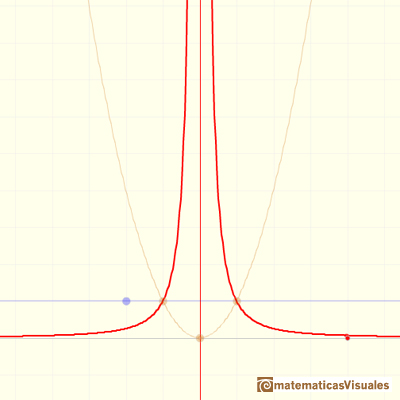
Or no vertical asymptote at all. It depends of the roots of the denominator (and, in some ways depends on the roots of the numerator).
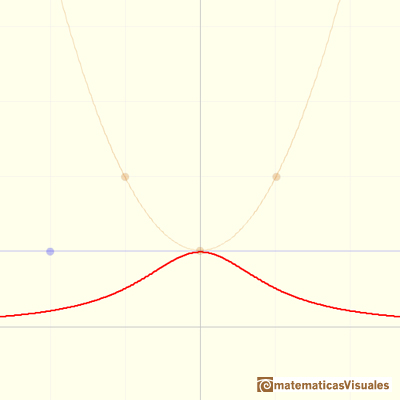
Roots of the denominator are values for which the function is undefined. You can not divide by zero. This values are called singularities of the function. This is interesting to study the function behavior near a singularity. In some cases, depending on the behavior near the singularity, the rational function has a vertical asymptote, as we have already seen in some examples.
In general, if x0 and x1 are two roots of the denominator

Then, the domain of the rational function is:
If we consider the extreme case when the numerator is equal to 0, the rational function is the horizontal line y=0 but with two holes, one hole or no holes.
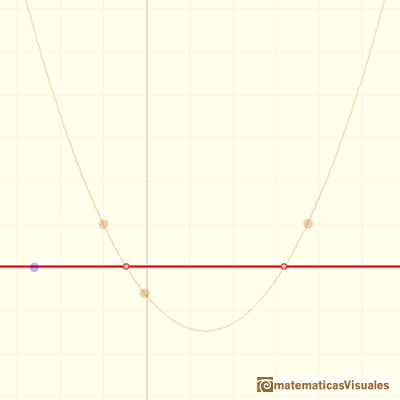
This kind of functions always have one horizontal asymptote (y=0)
Now we are going to consider rational functions that have in the numerator a polynomial of degree 1 (a non-horizontal straight line):

In the next mathlet you can play with this two elements of this kind of rational function: a straight line (the numerator, in blue) and a parabola (the denominator, in orange)
As before, this rational function can have 2, 1 or 0 singularities. It is interesting to study the behavior near the singularities depending on the position of the point where the straight line cuts the x-axis:

When the function has two singularities and the numerator cut the x-axis in one of these points, then in this singularity we do not have an asymptote but a 'hole'. We call this singularity an avoidable singularity.


For example, in the previous graph the formula is:
Notice that the numerator and the denominator have (x-1) as a common factor.
Another different case is when the function has a singularity but of degree 2 (the parabola only touches the x-axis, the degree 2 polynomial of de denominator has a double root) and the numerator has the same root, then we have an asymptote.

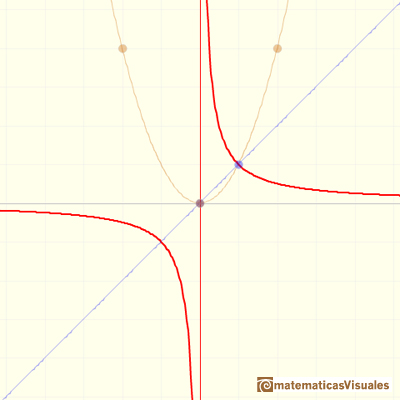
For example, in the previous graph the formula is:
You can see that in some cases the graph of the function cuts the horizontal asymptote y = 0:
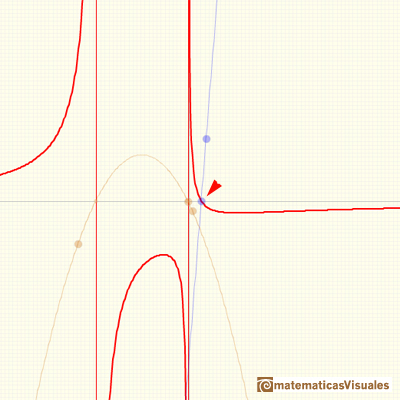
You can add a constant function p to a proper rational function with a denominator of degree 2:

In the next video we can see the three elements of this kind of rational function: a number p (in green a horizontal line), the numerator (a straight line, in blue) and the denominator (a parabola, in orange)
This kind of rational functions has a horizontal asymptote:
When we say that a rational function with a degree 2 polynomial in the denominator can have two, one or none singularities we are thinking about real singularities. When we consider these functions as Complex Functions then these functions always have two (real or) complex singularities. (This is a consequence of the Fundamental Theorem of Algebra, proved by Gauss).
REFERENCES
 NEXT
NEXT
 PREVIOUS
PREVIOUS
MORE LINKS

























